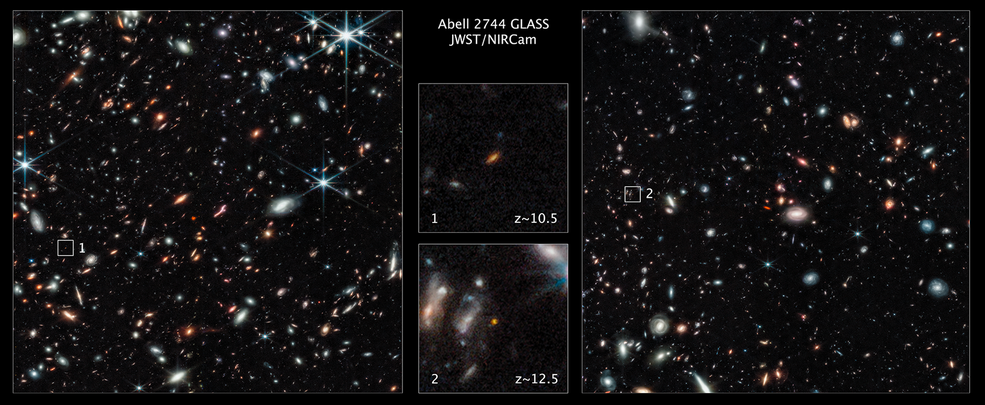James Webb Space Telescope captures the most distant starlight ever seen
Latest photos from the James Webb Telescope show the distant Abell 2744 galaxy formed around 10.5 billion years ago

Since the James Webb telescope was put into action earlier this year it has captured photos of a sparkling Dwarf Galaxy, the stunning Tarantula Nebula and the Pillars of Creation. Now it has broken a new record by capturing a nebula further away than ever before in the outer regions of the distant Glass Galaxy.
Compared to the famous Hubble telescope, the James Webb telescope blows it out of the park in color and clarity and has been able to photograph sections of the universe as never seen before. The latest mind-blowing photos to be sent back to earth are of very distant galaxies situated in the outer regions of the giant galaxy cluster Abell 2744.
Previously hidden out of sight of other telescopes, the two galaxies captured came into existence roughly 450 and 350 years after the Big Bang and although much smaller than the Milky Way, scientists are surprised at how bright they are.
• Capture photos that are out of this world with the best telescopes for astrophotography
Rohan Naidu of the Harvard-Smithsonian Center for Astrophysics and the Massachusetts Institute of Technology is one of two researchers working on the Early Release Science programs. On capturing this latest image he said, “With Webb, we were amazed to find the most distant starlight that anyone had ever seen, just days after Webb released its first data”.
Previously, the galaxy known as GN-z11 was the record holder for the furthest-away galaxy ever identified. It formed around 400 million years after the big bang and was photographed in 2016 by the Hubble telescope. Although the distance of these early galaxies still needs to be confirmed, the extreme brightness surprises scientists whose knowledge of galaxy formations has been challenged through these photos.
As the James Webb telescope continues to photograph deep space, our understanding of how the universe came to grow. Although scientists aren't yet sure how far away the Abell 2744 galaxy is, by using spectroscopy data collected from the telescope they should be able to work it out by measuring how light has been stretched in the expanding universe.
Get the Digital Camera World Newsletter
The best camera deals, reviews, product advice, and unmissable photography news, direct to your inbox!
The James Webb Telescope was sent into space so we could solve the mysteries of our solar system and so far, the results have been astounding. The more we can understand about how the universe came to be, the more we can learn about our place in it.
These light pollution filters for night photography will help you capture even clearer photos of starry skies.

Having studied Journalism and Public Relations at the University of the West of England Hannah developed a love for photography through a module on photojournalism. She specializes in Portrait, Fashion and lifestyle photography but has more recently branched out in the world of stylized product photography. Hannah spent three years working at Wex Photo Video as a Senior Sales Assistant, using her experience and knowledge of cameras to help people buy the equipment that is right for them. With eight years experience working with studio lighting, Hannah has run many successful workshops teaching people how to use different lighting setups.
